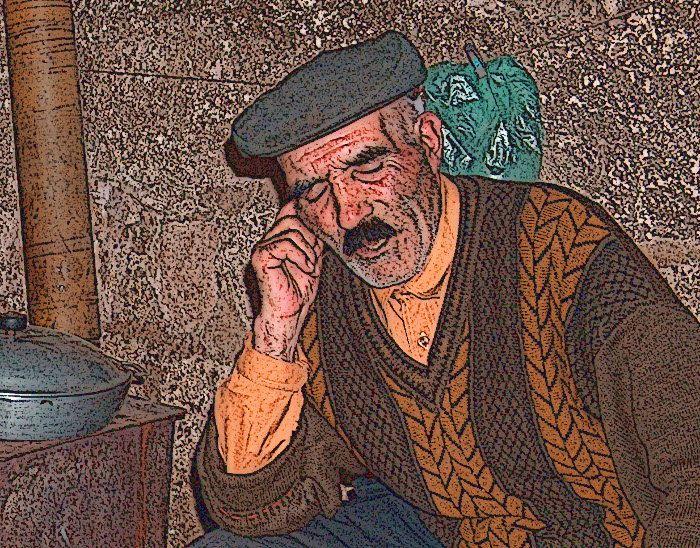Liminal utterances: argument (en)
Liminal Utterances: Between Speech and Song
23rd ICTM colloquium — organized by the CREM
20-22 May 2015 — Salle du conseil, B Building, Nanterre University
The relation between speech and song is an old debate in ethnomusicology. The topic was notably addressed List’s important article on the boundaries of speech and song (1963), in George Herzog's early explorations of the relationship between music and text (1934, 1942, 1950), and in John Blacking's account of musical "discourse" (1982). Linguistically informed works addressed the question as well, such as that by Laura Graham (1984, 1987), Charles Briggs (1993), Jean-Jacques Nattiez (1999), and Aaron Fox (1992, 2004).
But five decades after List’s foundational article, the topic continues to inspire discussion. The reason may be, as Anthony Seeger suggested, that the separation of disciplines that study different aspects of “vocal and verbal art has had a disastrous effect on the development of our thinking about them” (1986: 59). The wish to reconsider this separation has been pointed out for decades. This is particularly the case for studies focusing on liminal utterances, such as glossolalias or scat. Described by practitioners as an “event occurring in my throat” (Certeau 1996: 38), glossolalias are cases of vocal production without clear semantic meaning which multiplies the possibilities of speech. The decomposition of syllables and the combination of elementary sounds in games of alliteration create “an indefinite space outside of the jurisdiction of a language" (Certeau 1996: 42). In his study on scat, Brent Hayes Edwards (2002) also argues about an extended vocal space: a continuum between instrumental uses of the voice and vocal uses of instruments. In jazz, both are supposed to narrate stories.
But still very few studies build their analysis on the intimate link between the semantics and acoustics of voice production. As pointed out by Steven Feld and Aaron Fox (1994), most studies in ethnomusicology have difficulties in simultaneously taking into account the words and sounds of vocal production, and combined analyses of the semantics and acoustics of vocal production are still very few and mostly unsatisfactory.
To try to take up this challenge, this colloquium will focus on liminal utterances, at the border between speech and song. We will consider utterances such as laments, nursery rhymes, Qur'anic chanting, recitative or the use of the monotone voice in liturgy, iconicity of language, scat, glossolalias, melodized narrations, sung tales, vocal intonation in poetical performances and in political discourses, among others. Special attention will be given to a deeply combined analysis of the acoustics and semantics of these utterances.
References
BEAUDET Jean-Michel 1996 “Rire. Un exemple d'Amazonie”. L'Homme 36 (140): 81-99.
BLACKING John 1982 “The Structure of Musical Discourse: The Problem of the Song Text”. Yearbook for Traditional Music 14: 15‑23.
BRIGGS Charles L. 1993 “Personal Sentiments and Polyphonic Voices in Warao Women’s Ritual Wailing: Music and Poetics in a Critical and Collective Discourse”. American Anthropologist 95(4): 929‑957.
CERTEAU (DE) Michel 1996 “Vocal Utopias: Glossolalias”. Representations 56: 29‑47.
EDWARDS Brent Hayes 2002 “Louis Armstrong and the Syntax of Scat”. Critical Inquiry 28(3): 618‑649.
FELD Steven & FOX Aaron 1994 “Music and Language”. Annual Review of Anthropology 23: 25―53.
FOX Aaron 1992 “The Jukebox of History: Narratives of Loss and Desire in the Discourse of Country Music”. Popular Music 11(1): 53‑72.
2004 Real Country: Music and Language in Working-Class Culture. Durham, N.C. : Duke University Press.
GRAHAM Laura 1984 “Semanticity and Melody: Parameters of Contrast in Shavante Vocal Expression”. Latin American Music Review 5(2): 161‑185.
1987 “Three Modes of Shavante Vocan Expression: Wailing, Collective Singing, and Political Oratory”, in Sherzer & Urban dir.: Native South American Discourse. Berlin, New-York: Mouton de Gruyter: 83‑118.
HERZOG George 1934 “Speech-Melody and Primitive Music”. The Musical Quarterly 20(4): 452‑466.
1942 “The Text and Melody in Primitive Music”. Bulletin of the American Musicological Society 6: 10‑11.
1950 “Song”, in Leach dir.: Funk and Wagnalls Standart Dictionary of Folklore, Mythology and Legend. New-York: Funk and Wagnalls 2: 1032‑1050.
LIST George 1963 “The Boundaries of Speech and Song”. Ethnomusicology 7(1): 1‑16.
NATTIEZ Jean-Jacques 1999 Proust musicien. Paris : Christian Bourgeois éditeur.
SEEGER Anthony 1986 “Oratory Is Spoken, Myth Is Told, and Song Is Sung, But They Are All Music to My Ears”, in Sherzer & Urban dir.: Native South American Discourse. Berlin: Mouton de Gruyter: 59‑82.
